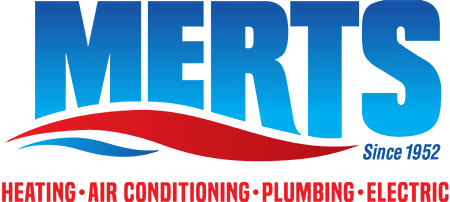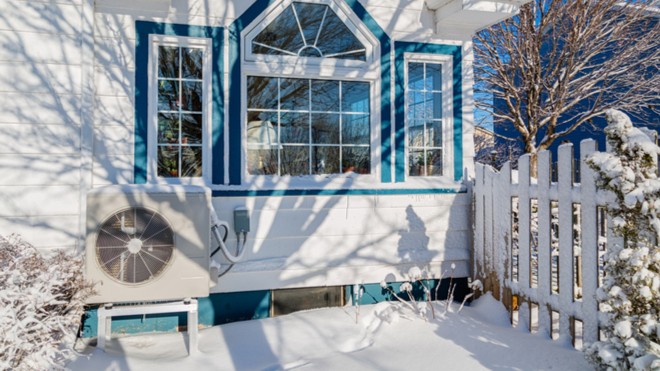Many times, our Merts Heating & Air Conditioning technicians are asked about using heat pumps for heating and cooling their homes in Illinois or Northwest Indiana. The best way to answer those questions is to talk a little bit about what heat pumps are and how they work.
Let’s start in the kitchen
If you have a gas stove, light a burner and carefully hold your hand above the flame. Your hand will quickly get very hot if it’s at all close to the flame. Now shut the stove off and walk over to the refrigerator. If the fridge is running, you should feel heat coming from behind or underneath. It may not be hot, but you should be able to feel warm air.
Here’s the point
We know why the stove is very hot. It’s actually burning fuel, but how does the refrigerator produce warm air when it’s not burning anything? Well, it’s keeping your food cold by squeezing the heat out of the air inside the fridge and transferring the heat to the room. In a very basic way this is the difference between a furnace and a heat pump.
Heat transfer
What a heat pump is really doing is transferring heat from one location to another. During the summer it works just like any other air conditioner. It uses a refrigerant to squeeze the heat out of the house and transfer it outside. Unlike an air conditioner, a heat pump has a reversing valve. During winter this allows it to squeeze heat from the air outside and transfer it into your home.
But the outside air is cold
Yes, the winter air may feel cold to the touch, but it still contains heat. Heat pumps are less efficient as the outside temperature drops. It’s why they are a much more common heating and cooling source in places where winters are moderate. But the technology has improved dramatically in the last decade or so, and heat pumps are now viable for heating homes in Illinois or Northwest Indiana. They are also the most efficient form of electric heat making them a great alternative if natural gas is not available.
Are there any disadvantages?
Some people may have comfort issues during the heating season. Heat pumps and furnaces are both forced-air systems. A furnace heats the air to a much higher temperature so the air moving around the house will feel warm. The heated air from a heat pump is generally lower than your body temperature. Even though it’s heating your home it may feel cool on the skin. If that worries you, a traditional furnace may be a better choice. Additionally, heat pumps are equipped with a supplemental electrical heating element (think of it like a space heater element). When the outside temperature gets very cold the supplemental or emergency heating element kicks which uses a lot more energy.
Always ready to help
If you still have questions about heat pumps for heating and cooling your Illinois or Northwest Indiana home, call Merts Heating & Air Conditioning to learn more. For more great information like this be sure to like and follow us on Facebook and Twitter.

